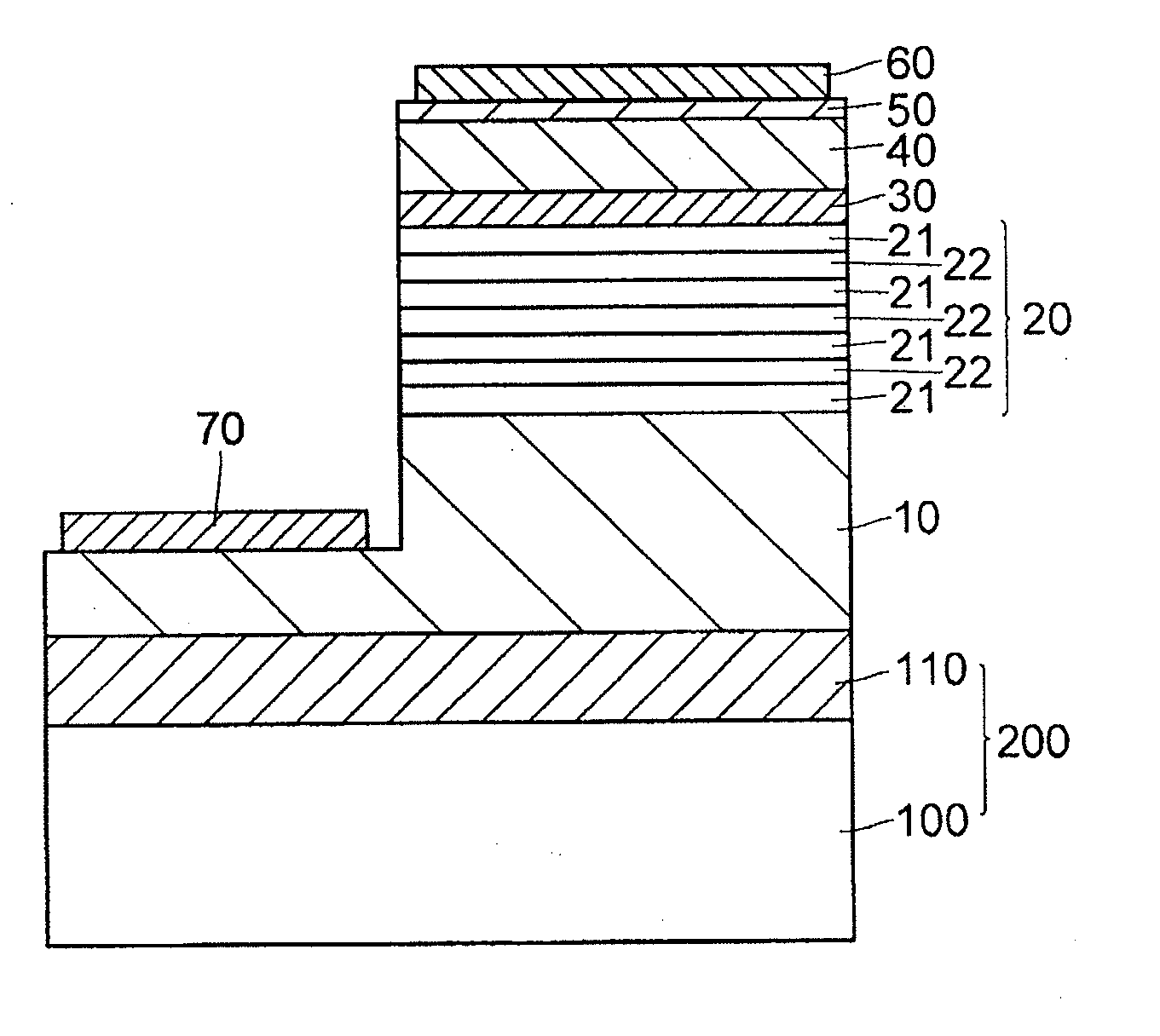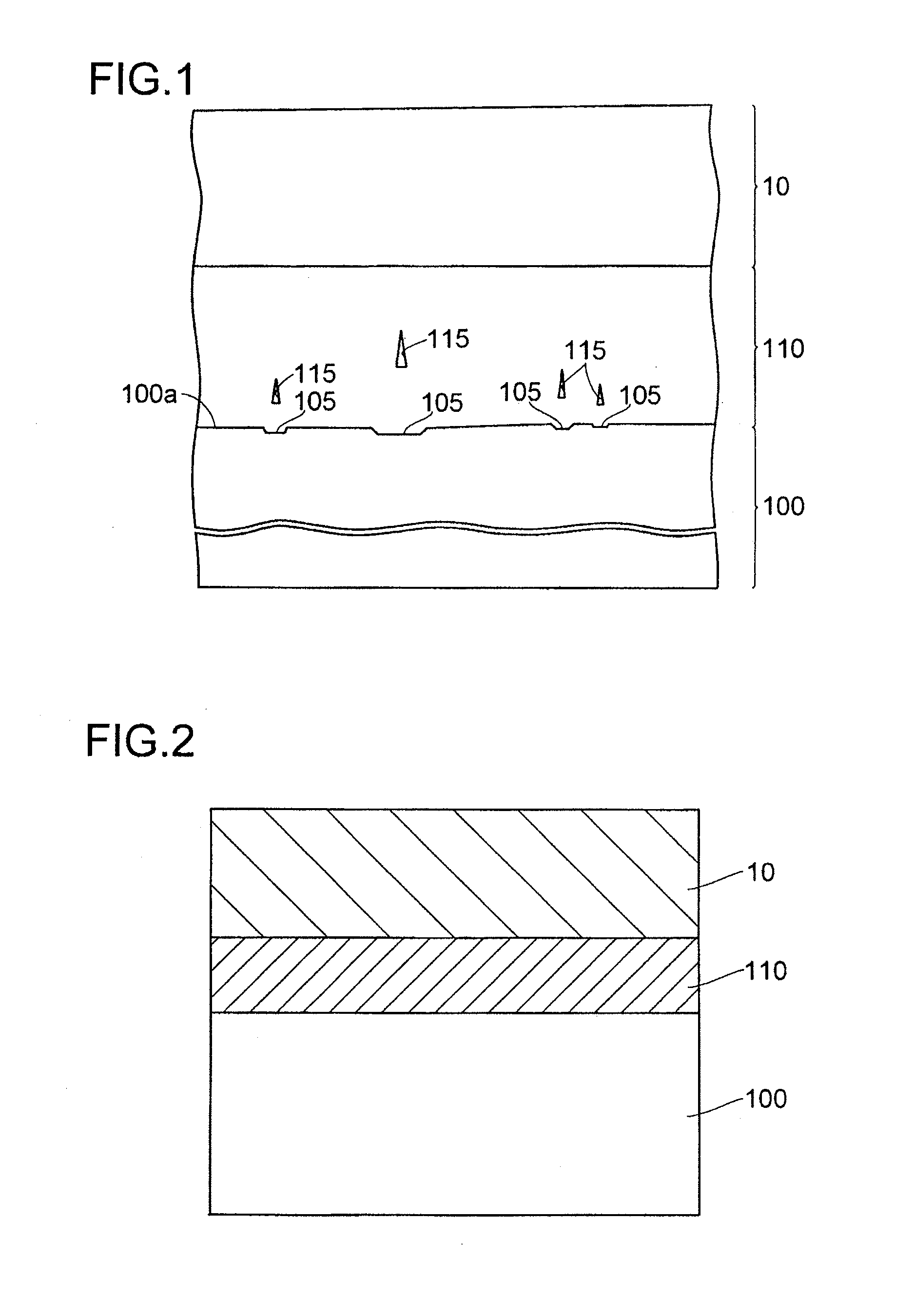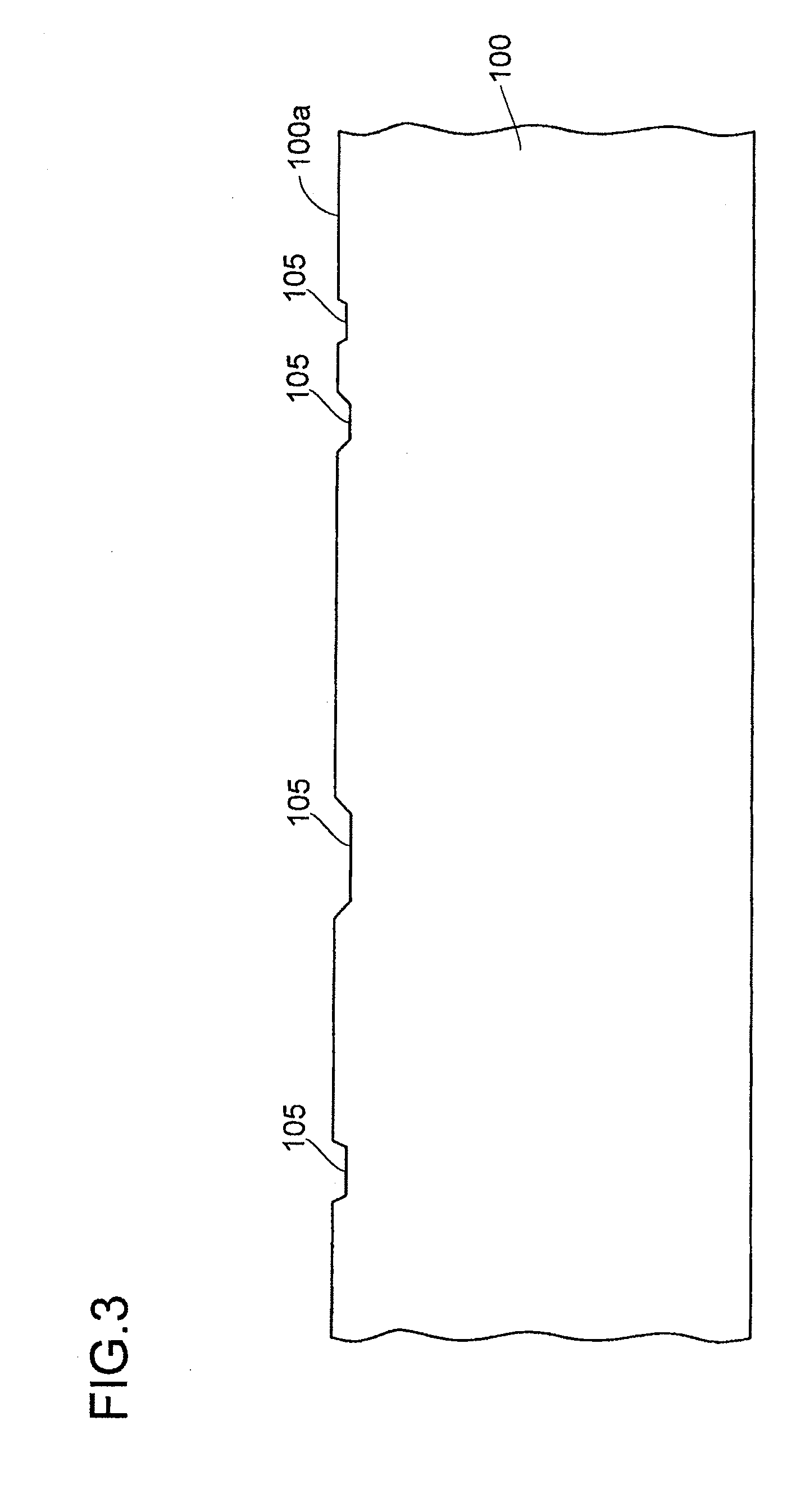Crystal growth method and semiconductor device
a growth method and crystal technology, applied in semiconductor/solid-state device manufacturing, semiconductor devices, electrical equipment, etc., can solve the problems of reducing the production efficiency of gan, so as to reduce the production cost and reduce the production cost. , the effect of suppressing cracks
- Summary
- Abstract
- Description
- Claims
- Application Information
AI Technical Summary
Benefits of technology
Problems solved by technology
Method used
Image
Examples
embodiment 1
[0068]As discussed earlier, crystal growth of a group III nitride semiconductor is liable to encounter development of cracks or a warp in the substrate. In particular, in the fabrication of ultraviolet light-emitting devices that emit light in an ultraviolet region, a nitride semiconductor layer with a high Al content needs to be formed with a comparatively large thickness, and this makes development of dislocations and cracks, and of a warp in the substrate, extremely likely.
[0069]Through intensive studies in search of a solution to the above problem, the present inventors have found that, when a material that reacts with a substrate is fed onto the substrate before crystal growth, a depressed structure forms spontaneously on the substrate surface. The inventors have further found that, by forming a nitride semiconductor layer on top of a substrate having such a depressed structure formed on it, it is possible to form a high-Al-content nitride semiconductor layer that is crack-free...
embodiment 2
[0124]FIG. 10 is a sectional view of a light-emitting diode device according to a second embodiment (Embodiment 2) of the invention. Next, with reference to FIGS. 1 and 10, the light-emitting diode device (semiconductor device) according to Embodiment 2 of the invention will be described.
[0125]The light-emitting diode device according to Embodiment 2 is an ultraviolet light-emitting device that emits light in an ultraviolet region, and more particularly a far-ultraviolet light-emitting device that emits light in a far-ultraviolet region of 200 nm to 350 nm. This light-emitting diode device is provided with a template substrate 200 which has an AlN buffer layer 110 formed on top of a silicon substrate 100, and has a plurality of nitride semiconductor layers stacked on top of the template substrate 200. In the light-emitting diode device according to Embodiment 2, formed on top of the AlN buffer layer 110 of the template substrate 200 are high-Al-content nitride semiconductor layers.
[...
embodiment 3
[0143]FIG. 12 is a sectional view of a light-emitting diode device according to a third embodiment (Embodiment 3) of the invention. Now, with reference to FIG. 12, the light-emitting diode device (semiconductor device) according to Embodiment 3 of the invention will be described. In FIGS. 10 and 12, corresponding parts are identified by the same reference signs, and no overlapping description will be repeated unless necessary.
[0144]In the light-emitting diode device according to Embodiment 3, the structure differs from that of Embodiment 2 described previously in that the silicon substrate 100 (see FIG. 10) is removed by chemical processing using a chemical liquid or the like. Then, on the back surface of the AlN buffer layer exposed as a result of removal of the silicon substrate 100, the n-side electrode 70 is formed. The n-side electrode 70 is, for example, a Ni / Au electrode of a multiple layer structure having a Ni layer (not shown) and a Au layer (not shown) stacked in this ord...
PUM
| Property | Measurement | Unit |
|---|---|---|
| temperature | aaaaa | aaaaa |
| thickness | aaaaa | aaaaa |
| thickness | aaaaa | aaaaa |
Abstract
Description
Claims
Application Information
 Login to View More
Login to View More - R&D
- Intellectual Property
- Life Sciences
- Materials
- Tech Scout
- Unparalleled Data Quality
- Higher Quality Content
- 60% Fewer Hallucinations
Browse by: Latest US Patents, China's latest patents, Technical Efficacy Thesaurus, Application Domain, Technology Topic, Popular Technical Reports.
© 2025 PatSnap. All rights reserved.Legal|Privacy policy|Modern Slavery Act Transparency Statement|Sitemap|About US| Contact US: help@patsnap.com



